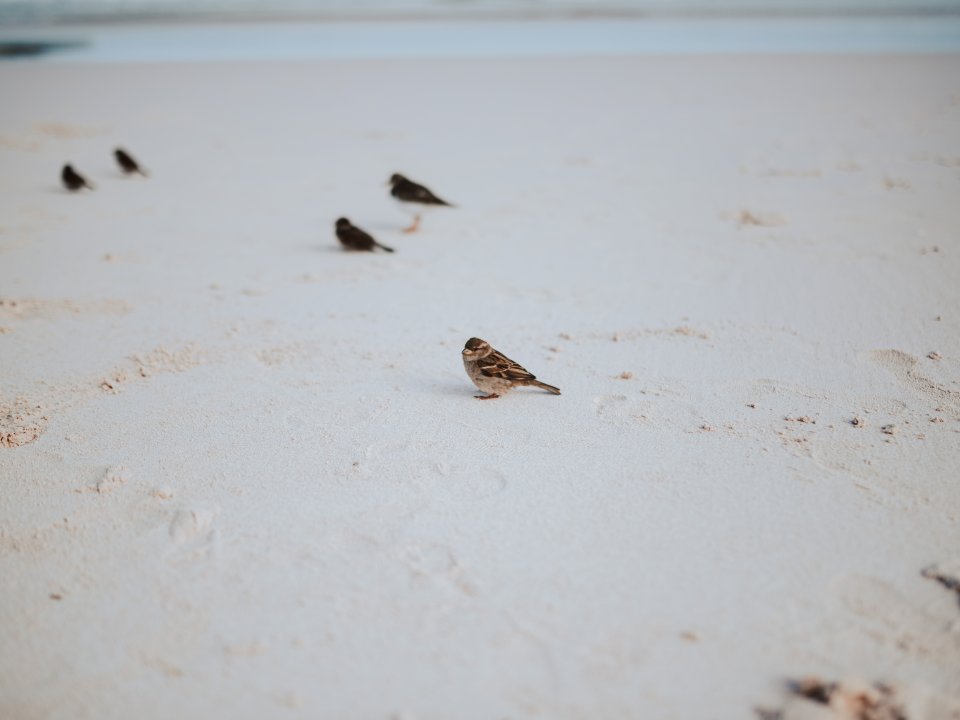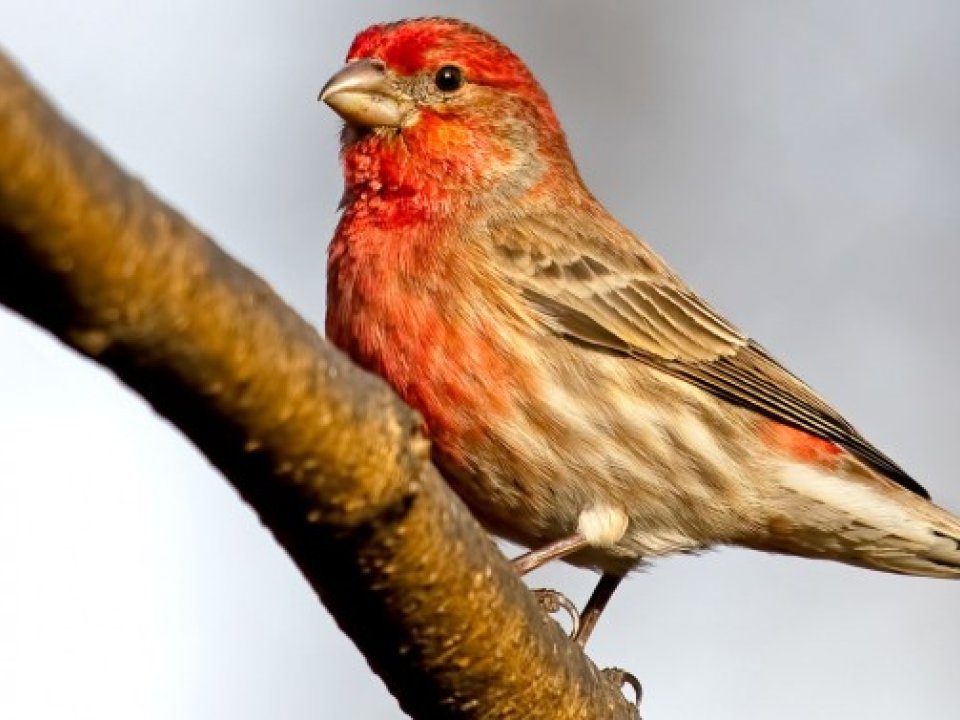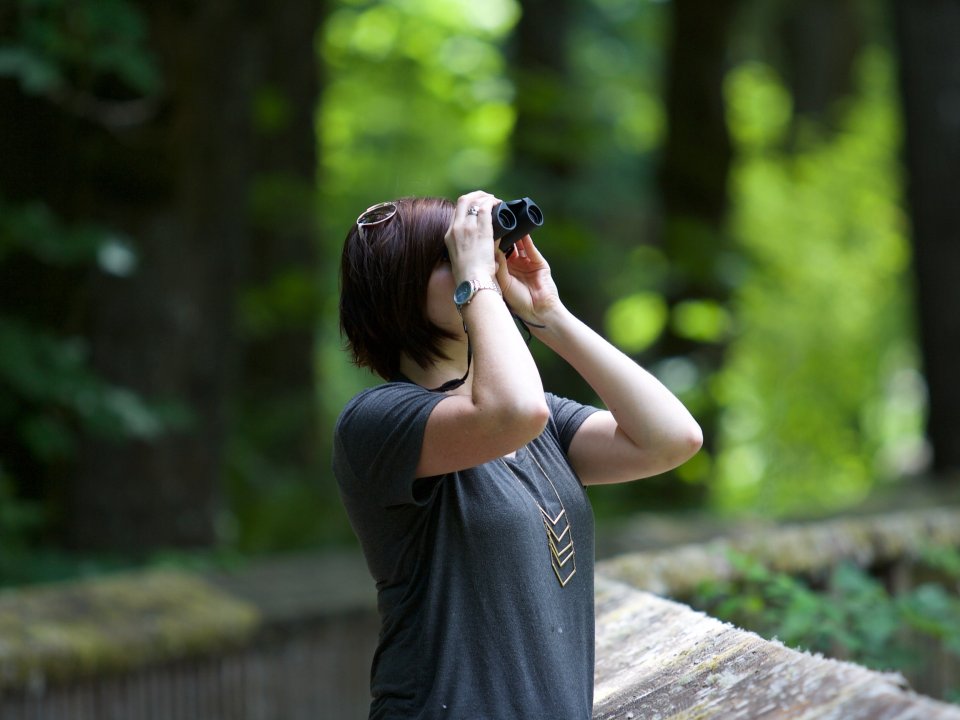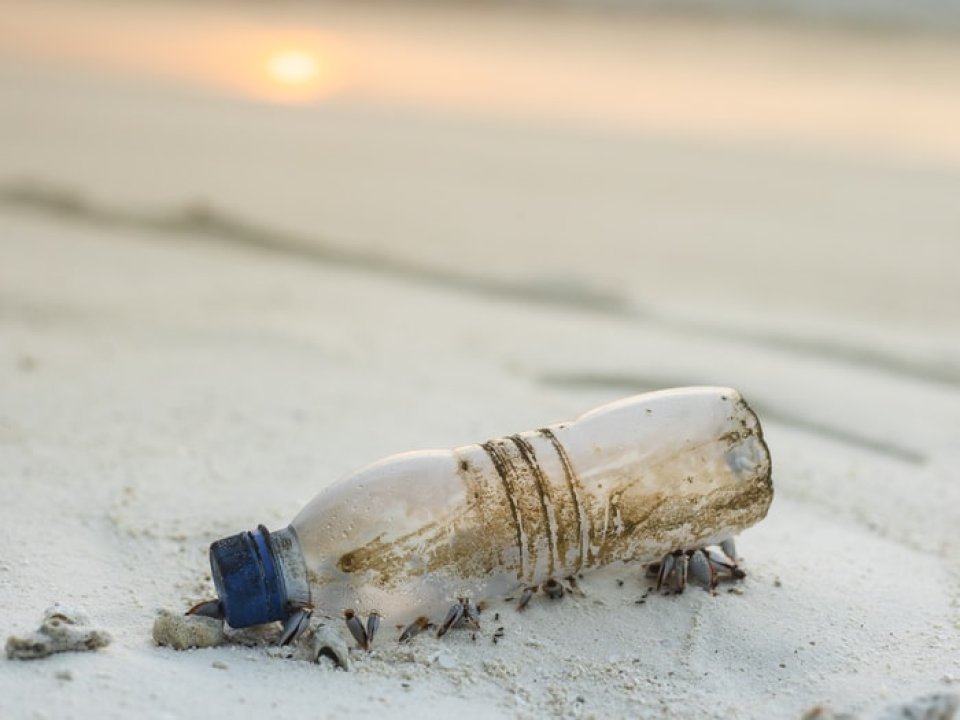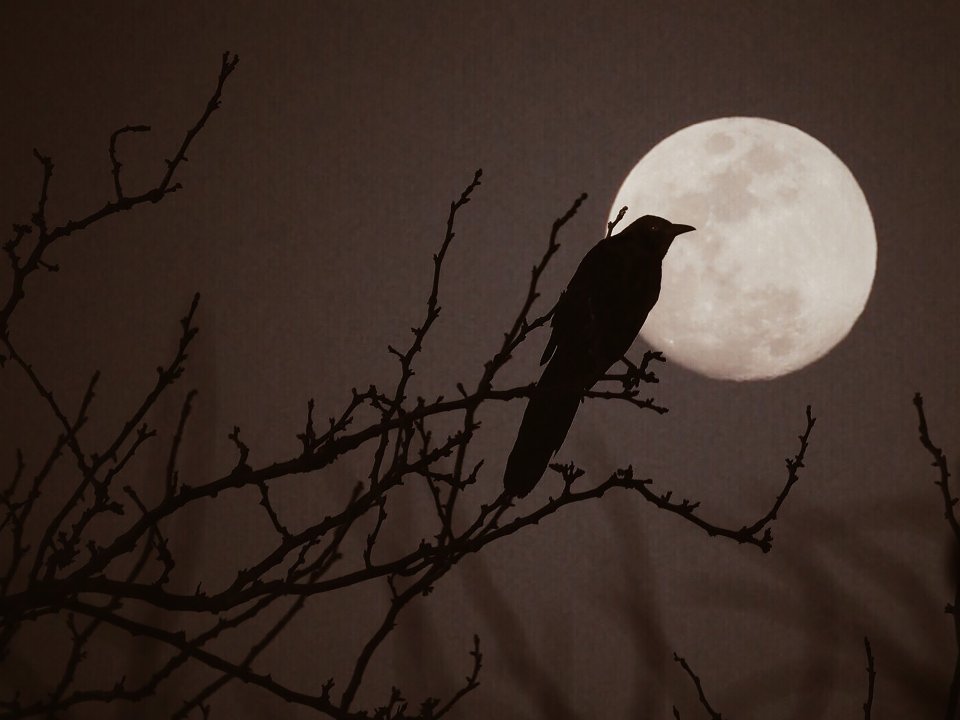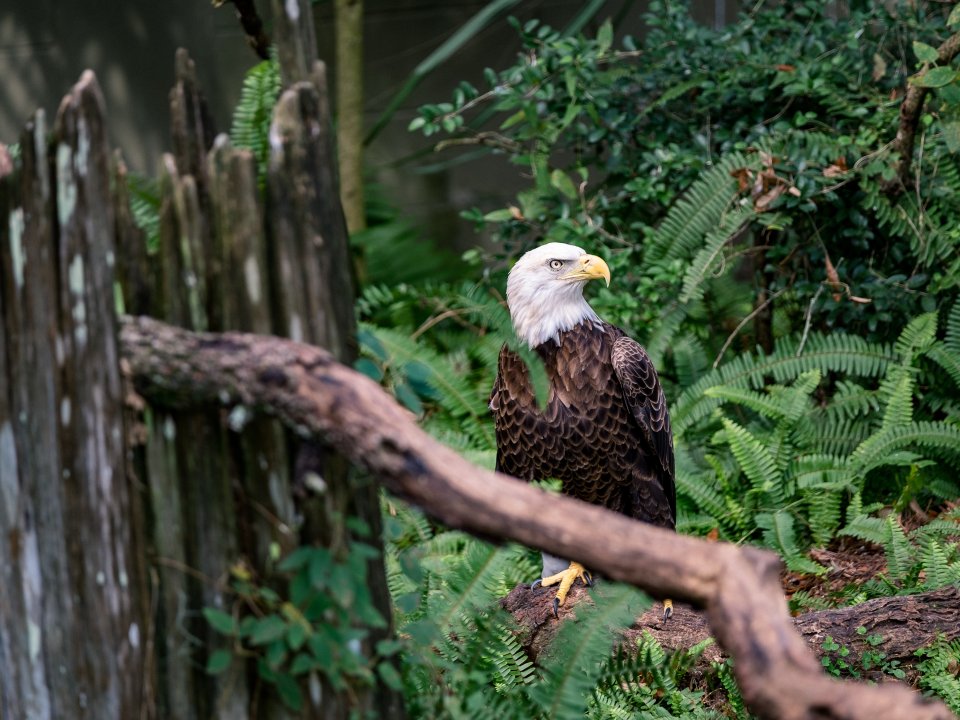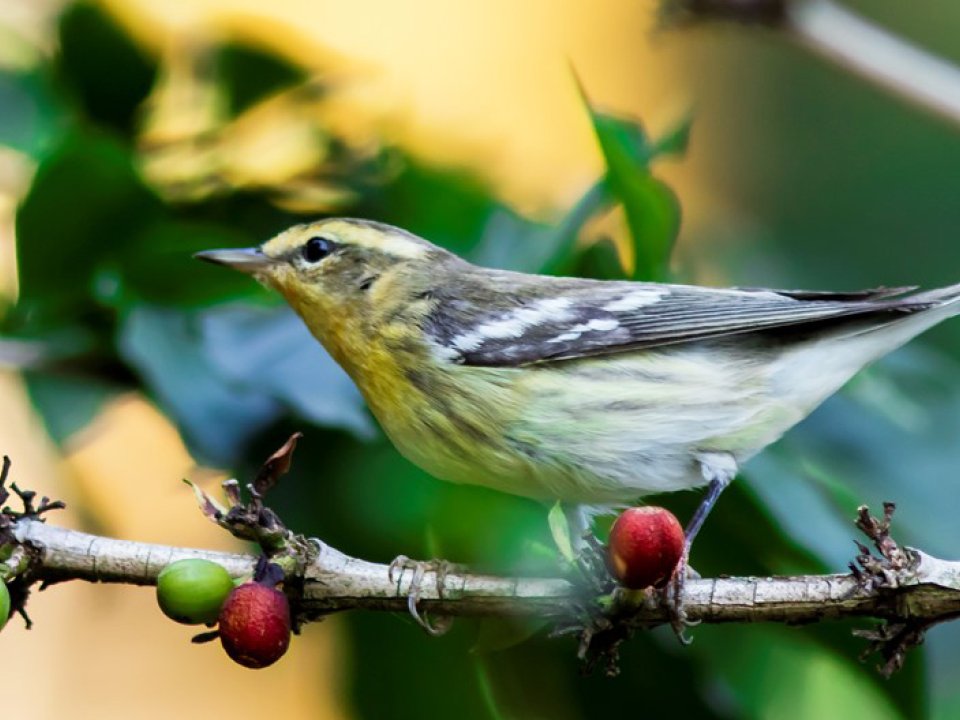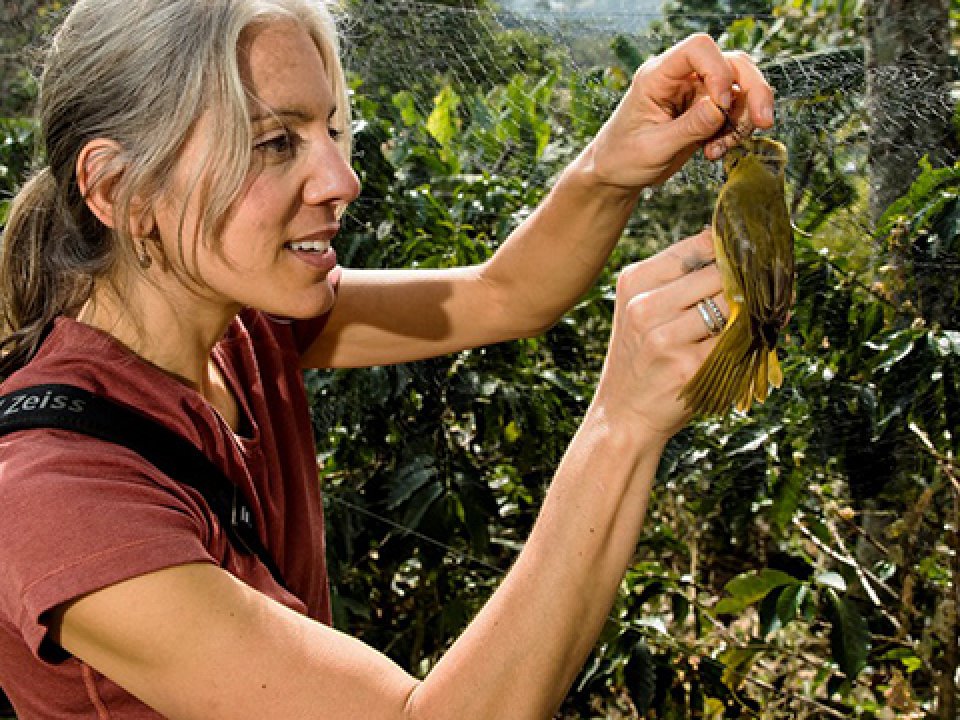News
“The details behind everything that happens in those burrows was basically unknown before,” says Charles Eldermire, leader for the Lab of Ornithology Bird Cams project.
House finch eye disease causes red, swollen, watery or crusty eyes. Afflicted birds can recover, but may die because they cannot see well enough to find food or avoid predators. The latest analyses, based on the observations of Project FeederWatch participants from eight Northeast states, addresses the long-term impact of the disease on house finch populations and points to the role of the finch immune system in the bird vs. bacteria battle.
Michelle Fournet, acoustic ecologist and postdoctoral fellow at the Cornell Lab of Ornithology, says artificial intelligence can weed out human biases and more accurately find meaning in animal communication and behavior.
Between 90 and 100 species of songbirds pass through the state of New York, where I live, in May, while a few stragglers, like the mourning warbler, visit into June, according to Andrew Farnsworth, a senior research associate at the Cornell Lab of Ornithology in Ithaca, N.Y. A fifth to a quarter of the migrants are warblers. Their distinctive songs, diminutive size and colorful plumage make warblers the stars of the spring migration.
Migrating songbirds descend on woods and thickets, along ponds and next to streams, to feed on insects. The insects fuel their migrations — remarkable tests of endurance.
Amanda Rodewald writes in The Hill: "The 30x30 initiative aligns with recommendations from the scientific and environmental communities to protect 30 to 50 percent of the planet. The initiative can meaningfully increase the quality and quantity of natural areas in the U.S., considering only 12 percent of the roughly 28 percent of federal lands are permanently protected from development and other intensive use."
This article about campaigns for cities to turn out their lights to help ensure the safe migration of bird populations notes that the Lab of Ornithology has used radar data to identify abnormal bird densities. The Lab of Ornithology is also credited with estimating that 1.1 million birds’ migrations were affected by a 9/11 memorial installation in New York City over seven nights in September.
“It’s a great American conservation success story,” Cornell Lab Center for Avian Population Studies Senior Director Amanda Rodewald said March 24 at a virtual press conference hosted by the USFWS. She thanked the agency for hosting the event to celebrate eagle recovery, and to celebrate the role of citizen science – the thousands of birders who shared their observations to help build the population models.
I really like how one of the organizers, Cornell University’s Steve Osofsky, a wildlife veterinarian, summarized how the health of wildlife, the health of ecosystems and our own health are inextricably linked.
To say that a majority of emerging viruses come from wildlife is not to blame wild creatures, explained Osofsky. It is to make the point that through our own behaviors we “invite these viruses into humanity’s living room: We eat the body parts of wild animals; we capture and mix wild species together in markets for sale; and we destroy what’s left of wild nature at a dizzying pace — think deforestation — all greatly enhancing our encounter rates with new pathogens.”
What these three behaviors have in common, added Osofsky, is one “surprisingly simple underlying cause: our broken relationship with wild nature, often based on a hubris that we are somehow separate from the rest of life on earth.”
A team of researchers from the Cornell Lab of Ornithology and Virginia Tech surveyed birdwatchers to learn if they drank shade-grown coffee and, if not, why not.
Amanda Rodewald, professor of natural resources, says, “Over recent decades, most of the shade coffee in Latin America has been converted to intensively managed row monocultures devoid of trees or other vegetation. As a result, many birds cannot find suitable habitats and are left with poor prospects of surviving migration and successfully breeding.”

